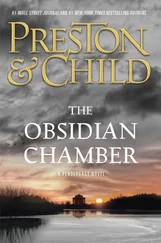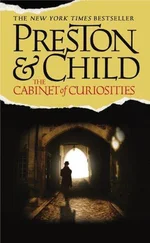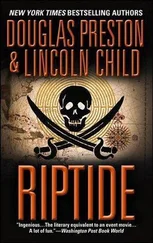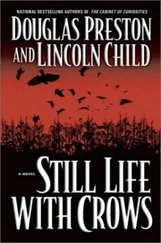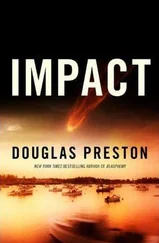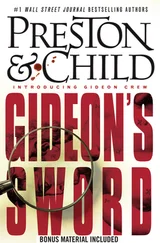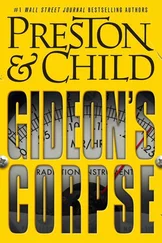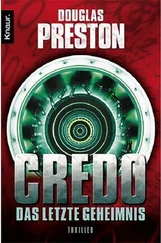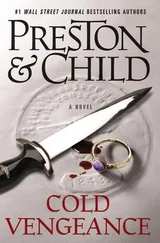“And you think Holroyd was murdered with it?”
“Given the huge dose he must have received to die so quickly, I would say yes. Although his illness was surely made worse by constant exposure to dust. He did quite a lot of digging in the rear of the ruin in the days before his death. The fact is, we’ve all been exposed to it.”
“I did my share of digging,” Smithback said, his voice a little shaky. “How much longer before we get sick, too?”
“I don’t know. A lot depends on the health of our immune systems, and on the degree of exposure. I believe the fungus is much more concentrated in the rear of the city. But regardless, it’s vital that we get out of here and get treatment as soon as possible.”
“So there’s a cure?” Smithback asked.
“Yes. Ketoconazole, or in advanced cases where the fungus has invaded the central nervous system, amphotericin B injected directly into the cerebrospinal fluid. The ironic thing is, ampho is a common antibiotic. I almost brought some along.”
“How sure are you about this?” asked Nora.
“As sure I can be without more equipment. I’d need a better microscope to be absolutely sure, because in tissue the spherules are only about fifty microns in diameter. But nothing else explains the onset of symptoms: the cyanosis, dyspnea, the mucopurulent sputum . . . the sudden death. And the simple test I just performed on Peter’s lung tissue confirmed the presence of coccidioidin antibodies.” He sighed. “It’s only in the last day or so that I began putting this together. Late yesterday evening, I spent some time in the ruin, and found other examples of corpse powder stored in pots, as well as various odd types of tools. From this, and from all the trashed bones in the Crawlspace, it became quite clear that the inhabitants of Quivira were actually manufacturing corpse powder. As a result, the whole city is contaminated with it. The entire subsoil of the ruin is full of the spores, its density increasing toward the back. That puts the greatest concentration in the Crawlspace, and especially in the cavern of the Sun Kiva that Black discovered.”
He paused. “I told you my theory that this city was not really Anasazi after all. It was Aztecan in origin. These people brought human sacrifice and witchcraft to the Anasazi. It’s my belief that they are the marauders, the conquerors, who caused the collapse of Anasazi civilization and the abandonment of the Colorado Plateau. They are the mysterious enemies of the Anasazi that archaeologists have sought all these years. These enemies did not kill and exert control through open warfare, which is why we’ve never found the evidence of violence. Their means of conquest and control were more subtle. Witchcraft and the use of corpse powder. Which leaves little or no trace.”
His voice fell. “When I first analyzed that burial cyst Sloane uncovered, I felt it to be a result of cannibalism. The marks on the bones seemed to point to that. In fact, Black’s protests to the contrary, it was the obvious deduction to make: Anasazi cannibalism is currently a hot, if controversial, theory. But I no longer think cannibalism is at the bottom of all this. I now believe those marks on the bones tell an even more terrible tale.”
He looked at Nora with haunted eyes. “I believe the priests of the city were infecting prisoners or slaves with the disease, waiting for them to die, and then processing their bodies to make corpse powder. The trash from that terrible operation lies in the back of the cave. With the powder, these conquerors could maintain their rule through ritual and terror. But in the end, the fungus turned on them. The mild earthquake that damaged the towers and caused the landslide must have raised a tectonic fungal cloud in the valley here, just like in San Joaquin. Except that here, in the confined space of the canyon, the dustcloud had no place to go. It filled the alcove, enshrouded the city of Quivira. All those skeletons, thrown atop the broken bodies in the back of the cave, were its priestly Aztec victims.”
Aragon stopped speaking and looked away from Nora. His face, she thought, had never looked so drawn, so exhausted.
“Now, it’s time for me to tell you something,” Nora replied slowly. “Modern-day witches may be the ones trying to drive us out of the valley.” She briefly told Aragon about the attack in the ranch house and the more recent conversation with Beiyoodzin. “They followed us out here,” she concluded. “And now that they’ve found the site, they’re trying to drive us away so they can loot it for themselves.”
Aragon thought for a moment, then shook his head. “No,” he said. “No, I don’t think they’re here to loot the city.”
“What are you talking about?” Smithback interjected. “Why else would they be trying to drive us away?”
“Oh, I don’t dispute they’re trying to drive us away. But it’s not to loot the city.” He glanced once again at Nora. “You’ve been assuming all along that these skinwalkers were trying to find the city. What if they were actually trying to protect it?”
“I don’t—” Smithback began.
“Just a minute,” Nora broke in. She was thinking quickly.
“How else could they have traced us here so quickly?” Aragon asked. “And, if indeed they killed Holroyd with corpse powder, where else could they have gotten it, except from this place?”
“So they weren’t after the letter to learn Quivira’s location,” Nora murmured. “They wanted to destroy the letter. To keep us from coming here.”
“Nothing else makes sense to me,” Aragon replied. “Once, I believed that Quivira was a city of priests. Now, I believe it was a city of witches.”
They sat a moment longer, three figures ranged around the still form of Holroyd. Then a sudden breeze, chill with moisture, stirred the hair on Nora’s forehead.
“We’d better get going,” she said, rising. “Let’s get Peter’s body out of the canyon.”
Silently, they began rewrapping the body in the ripped drysack.
48
AS JOHN BEIYOODZIN URGED HIS HORSE down the trail into the valley of Chilbah, his heart quickly sank. From the first switchback, he could make out the expedition’s horses; the remuda was watering at the stream. The tiny creek meandered down the center of a great flood-plain, torn and guttered, scattered with boulders and tree trunks. He glanced upward anxiously, but the thunderhead was now out of sight, hidden behind the fin of rock.
He knew only too well that this valley was a bottleneck for the vast watershed of the Kaiparowits. The flood, coming down the miles off the Kaiparowits Plateau, would gradually coalesce as the canyons came together in the upper reaches of the Chilbah Valley. It was all uninhabited, from the Kaiparowits to the Colorado River—except for the archaeologists in the valley beyond, which lay directly in the path of the water.
He looked to his right, where the valley broke up into a series of canyons and dry washes. The water coming off the Kaiparowits Plateau would enter the Chilbah Valley through these circuitous, twisting canyons. It would then race through the lower valley in one overwhelming mass. It would be colossal, covering the entire floodplain and probably tearing into the banks. If the horses weren’t moved well out of the plain and up into the high benchlands on either side of the valley, they would be swept away. Many of his people’s horses had died in flash floods. It was a terrible thing. And if there were people on the floodplain of the valley beyond—or, even worse, in the slot canyon that connected the two valleys . . .
He urged his horse into a plunging lope down the rubbled trail. He just might have time to reach the horses and scare them up to higher ground.
Читать дальше

